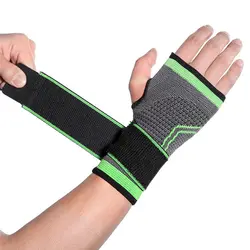Wristbands are one of the most common, easy to wear, and most valuable pieces of protection in fitness. However, many exercisers will always make some mistakes when wearing wristbands, resulting in wristbands not playing a good protective role.
A proper wrist brace not only protects your wrist joint, but can even help you with heavier bench press/push weights, or longer handstand supports.


The significance of the wristband is mainly two points:
Secure your wrist. Keep your wrist in the neutral position as much as possible, and if the wrist is not in the neutral position, the wrist guard will make the wrist have a tendency to return to the neutral position.
Provide support. When the wrist is not in a neutral position, the wrist guard can relieve the pressure on the wrist, reduce pain and reduce the risk of injury.
How to wear the wristbands
Wristbands are not just wrapped around the wrist. There are five details of wearing wristbands that are often overlooked by exercisers:


Details 1. The wristband should completely cover the wrist joint. If the wristband is too low, the wrist joint is not fixed, and the wristband does not play a protective role. Most trainers make this mistake.
Details 2. When winding, the wristband needs to be pulled apart forcefully, so that the elastic force of the wristband material after winding can better wrap the wrist.
Details 3. After wearing the wrist guard, the finger cover needs to be removed in order to reduce the pressure between the thumb and the big fish. This is a detail that many sellers who sell protective gear do not understand.
Details 4. When wrapping around the wrist guard, you should not pursue “comfort”, but should try to keep the wrist fixed and inactive.
Details 5. Wristbands should not be worn all the time, and should be taken off during group breaks.
Post time: May-15-2023














